Etiquette at Bird Feeders
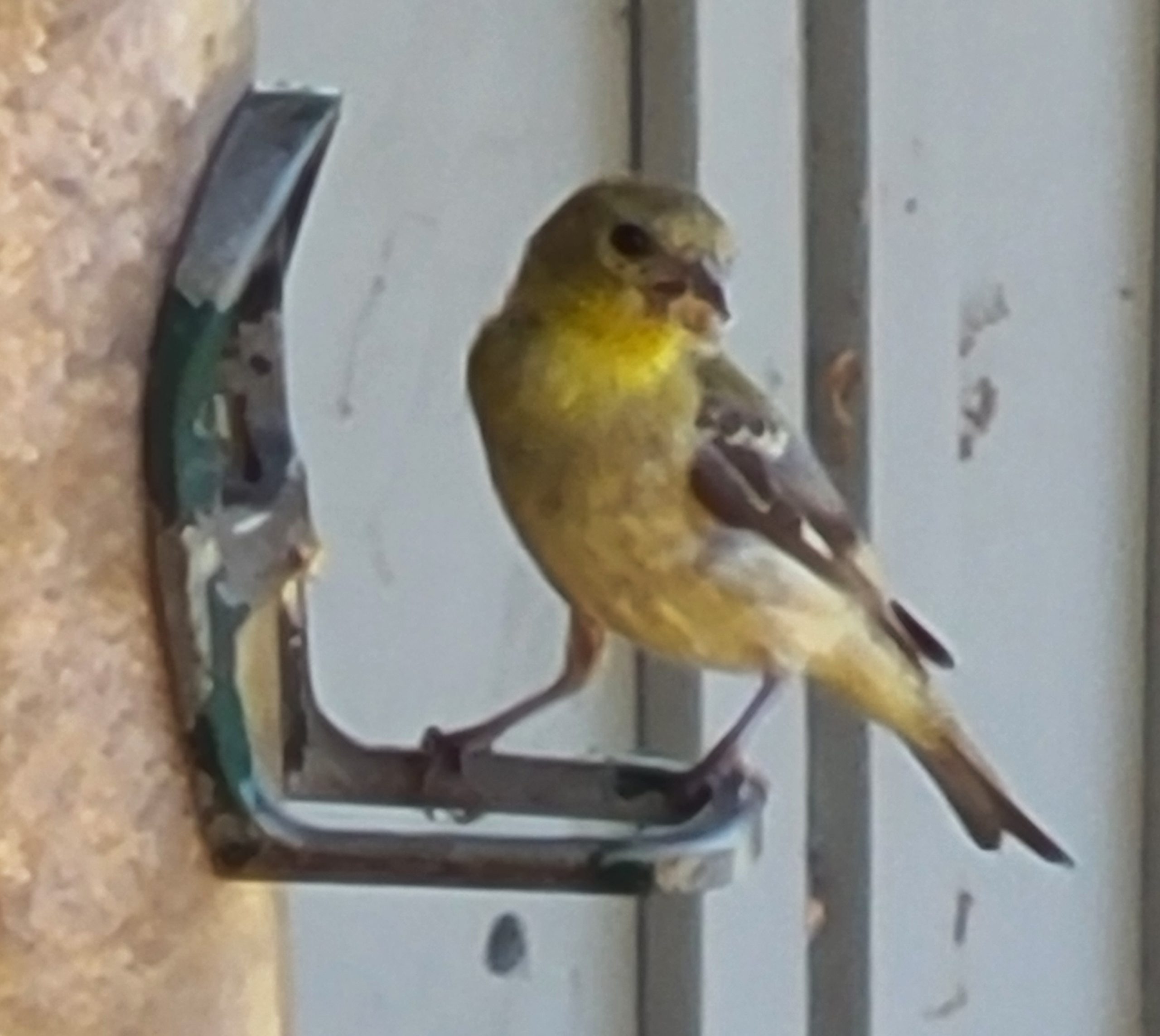
Lesser Goldfinch at my Tube Feeder
Photo Credit – Author
It has been a fascinating two years living in northern California, close to the Pacific Coast, observing the etiquette of birds that visit my bird feeders. Each specific species has a distinct bird behavior and attitude. A comprehensive list of visitors to California bird feeders is available on this website: https://avianreport.com/california-backyard-feeder-birds/
My more personal list is as follows.
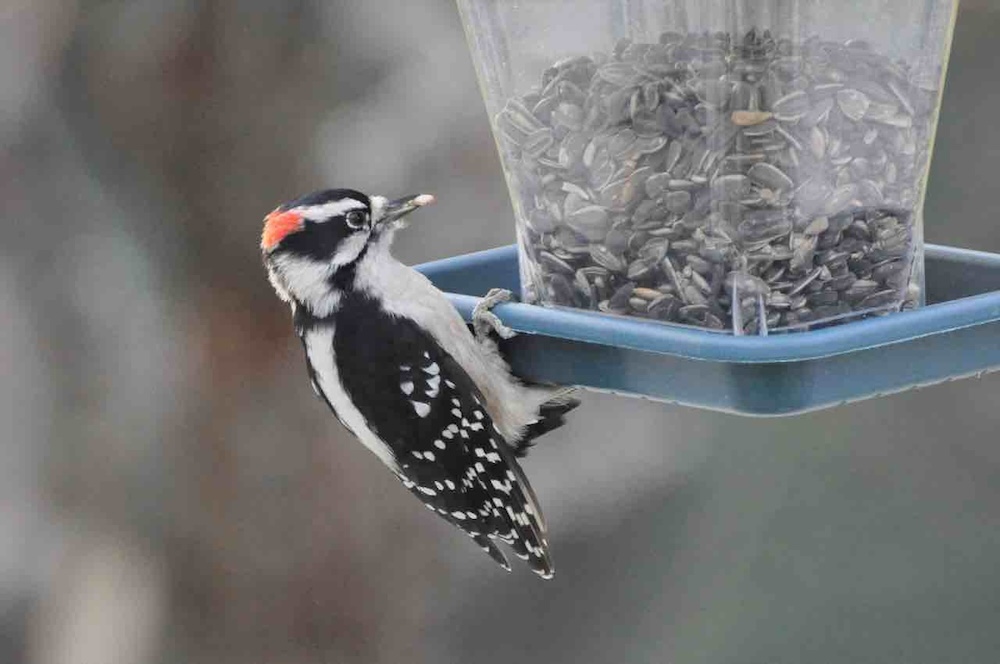
Downy Woodpecker
Photo Credit – Tammy Popple at OnTheFeeder.com
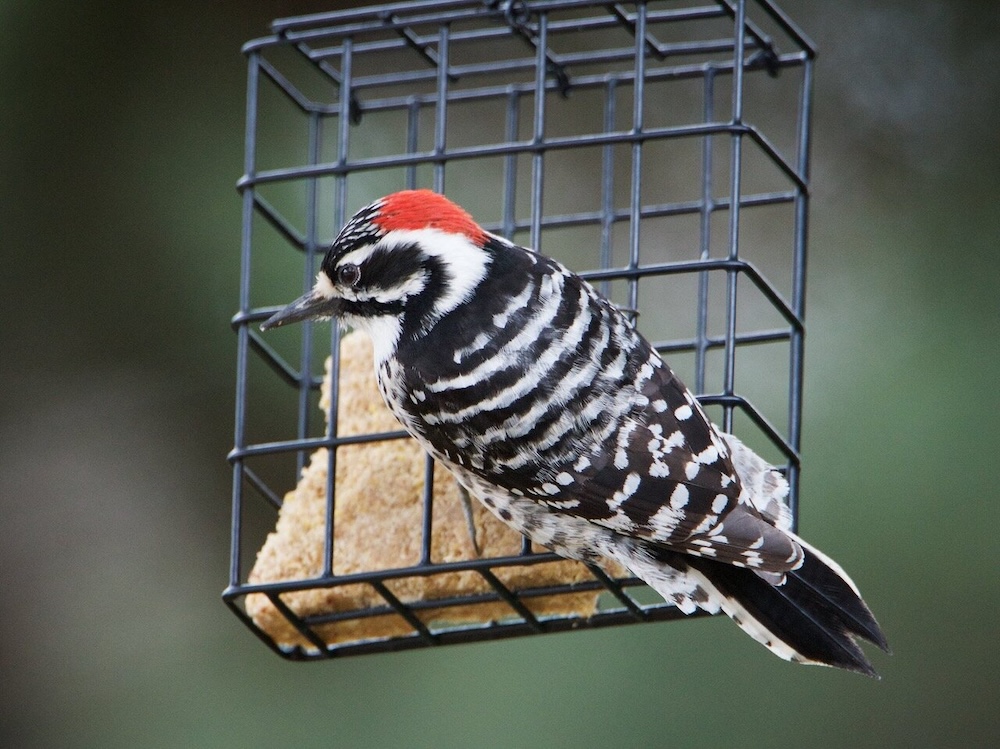
Nutall’s Woodpecker
Photo Credit – Santa Clara Bird Alliance
I have added substitutions, deletions, and additions to focus on my more familiar visitors. In my yard, there is the Downy Woodpecker, not the Nutall’s Woodpecker; the American Robin arrives for berries rather than visits my bird feeders; Starlings, Golden-crowned Sparrows, and Northern Mockingbirds are absent even though they live nearby; the Black-headed Grosbeak is a rare visitor but is not on the attached list, and flocks of Band-tailed Pigeons (also not on the attached list) are unwelcome guests. They descend in groups and eat from bird feeders until the food is exhausted and frighten away everything else. Recently, I added peanuts to my offerings, only to discover a few minutes later that a mass of Band-tailed Pigeons had arrived.
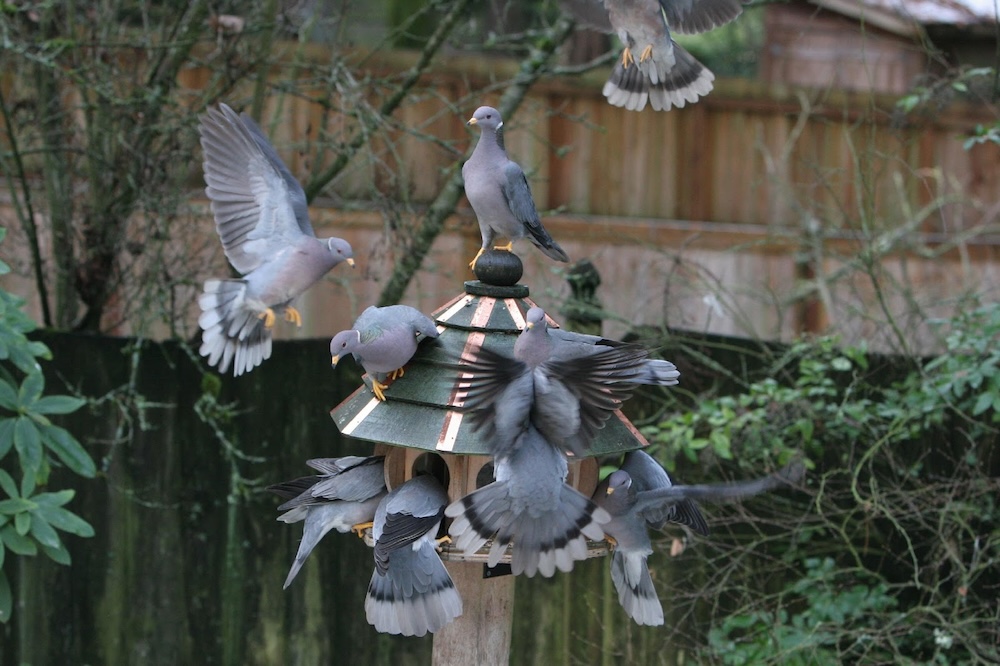
Band-tailed Pigeons
Photo Credit – Craig Kerns, Shoreline Area News
Here are some of my more frequent visitors. The Lesser Goldfinch (illustration above) is a year-round visitor, easily frightened and subordinate to larger, more aggressive birds. Its favorite food is the small, dark-colored thistle (nyjer) seed, kept in a mesh tube feeder that other birds cannot access except for the occasional Oak Titmouse. This way, it avoids competition, but its presence remains skittish.
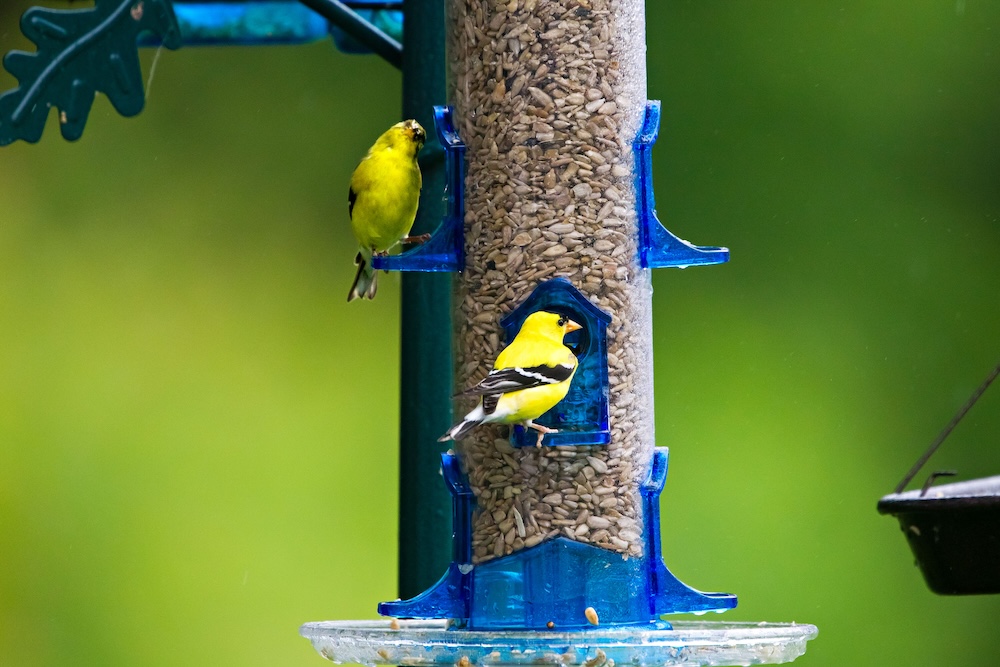
American Goldfinch
Photo Credit – Better Homes and Gardens
Sometimes, Lesser Goldfinches are accompanied by the American Goldfinch, which has the distinctive black head of the breeding male. They are a little more sociable but appear to prefer regular bird feeders with various seeds.
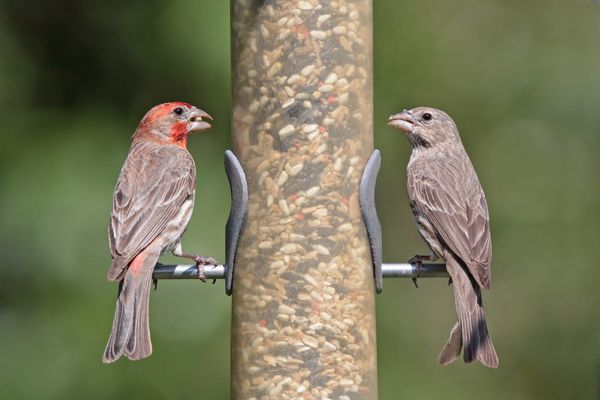
House Finches; red male; plain female:
Photo Credit – Birds of Quail Valley
House Finches are my most common visitors, probably every day of the year. They gather in the bushes and chatter while waiting to compete at the tube feeders. They defer to larger, more aggressive birds like the California Scrub Jay and allow smaller birds, such as the Oak Titmouse and Chestnut-backed Chickadee, to take over their perches. They are more aggressive towards each other. Sometimes mixed among them are Cassin’s Finches and Pine Siskins.

Oak Titmouse
Photo Credit – Wild Birds Unlimited
The Oak Titmouse is a curious bird that feeds using a grab-and-run technique. It visits platform feeders, suet cages, and hanging feeders but takes its food to eat elsewhere. If being pushed to one side, expect to hear its harsh scolding call and see its raised crest.
Its close relative, the Chestnut-backed Chickadee, displays similar bird behavior. This cautious visitor prefers suet holders over tube feeders and flits quickly between food sources. It takes a mouthful at a time and promptly leaves to eat or store it elsewhere.

Chestnut-backed Chickadee
Photo Credit – Author

California Scrub Jay
Photo Credit – National Wildlife Federation
The species I find the most fascinating is the rather drab-looking California Towhee. It has some interesting bird behavior — appearing to have no fear of humans as it persistently pecks away at the ground for food. The California Towhee neither bullies other birds nor will it be bullied. It is a ground feeder, but occasionally, it visits platform and suet feeders. It seems to know what’s up there. I watched a California Towee repeatedly fly to a suet basket to peck at the suet balls while still in flight. It then dropped to the ground to eat what it had pecked. Over the weeks, it discovered a platform in the center of the suet feeder and eventually realized by occupying it, the bird could happily peck away at the food and consume it undisturbed.
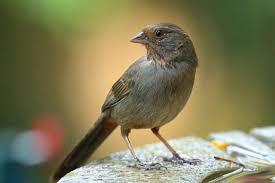
California Towhee
Photo Credit – Marin Independent Journal
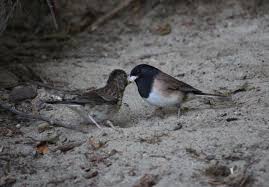
Dark-eyed Junco
Photo Credit – r/Birding
Finally, my most industrious visitor is the Dark-eyed Junco. I observe them year-round as they hop, search, and peck for food on the ground, often spilt by other birds. It is not easily frightened.
On a peaceful day, nothing is more satisfying than sitting outside watching birds feed. In addition to the species I have covered, there are other visitors, such as the American Crow, Mourning Dove, Nuthatches, and Spotted Towhee.
If you have or are thinking of installing a bird feeder, please consider the following:
- Limit the food you provide to last one to two days
- Avoid contamination of the bird food
- Keep your bird feeders clean
- Avoid locations close to windows; the ideal is within three feet, so the bird is still in lift-off or 30+ feet away, so the window’s reflection does not attract it.
Enjoy your backyard birdwatching. You’ll see some interesting bird behavior. It’s been a hobby of mine since the 1950s when, on my family’s farm home in England, I would see Blue Tits, Great Tits, House Sparrows, European Robins, Starlings and Chaffinches. Today, in the same area, you can include European Goldfinches, Long-tailed Tits, and Nuthatches.



